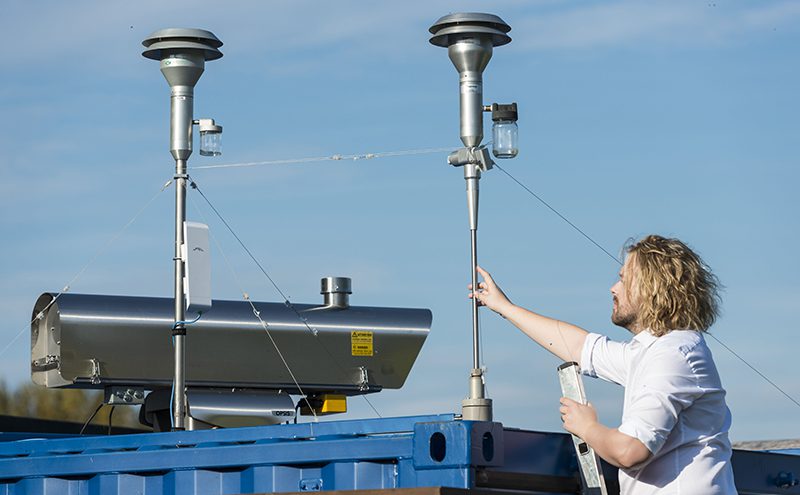
The University of Brighton has launched online air quality data so residents can see which times and days were more polluted than others.
The service could help those with respiratory diseases such as asthma avoid outdoor exposure when levels of pollutants are at their highest.
The data is in the form of graphs showing levels of potentially harmful gases over the last 24 hours, seven and 30 days. The graphs can be seen at: https://bit.ly/2QwNHxp.
The readings come from the University’s £250,000 Air Environment Research (AER) monitoring station at Falmer, the first of its kind in the UK.
Dr Kevin Wyche, Senior Lecturer in Atmospheric Science and Air Quality Management within the University’s School of Environment and Technology, and co-founder and principal investigator of the AER, said knowing what pollutants are in the air is increasingly vital.
He said: “More than 50,000 people die prematurely each year in the UK from air pollution-related diseases, costing the NHS around 16 per cent of its total budget.
“Knowing when pollution is at its highest during the day and what days are worse than others could help some people avoid exposure.”
The new website, launched following last week’s World Health Organisation’s conference in Brussels on air quality, provides five graphs:
· Nitrogen Dioxide NO2 – the main source is burning fossil fuels as in cars and this can irritate lungs and make diseases such as asthma worse. This, in turn, can lead to great risk of infections
· Ozone O3 – concentrations are often highest on hot, still and sunny days, and are a major component of modern ‘smog’
· Sulphur Dioxide SO2 – can be damaging to the environment and acts as a respiratory irritant, causing coughing and shortness of breath
· Formaldehyde HCHO – can cause irritation of the skin, eyes, nose and throat.
· Nitrous Acid HONO – can contribute to the formation of other pollutants
Dr Wyche, who is chairing a forthcoming Public Policy Exchange at an EC and ClientEarth event, said the WHO has reported that outdoor air pollution kills more people worldwide than road traffic accidents, smoking and diabetes combined.
Dr Kirsty Smallbone, Head of the School of Environment and Technology and is co-founder and co-investigator of Air Environment Research, said: “Brighton is exceeding air quality limits set by the government and it is crucial that we enhance our understanding of the relationships that exist between pollutants and health.
“It is also vital and incumbent upon us to share our knowledge and data with the public.”
The monitoring station is co-funded by the EU’s Interreg IVB NWE programme and the University of Brighton as part of the Joint Air Quality Initiative (JOAQUIN). Graphs and data archives are produced by Jason Bailey, Learning Technologies Adviser at the University.






